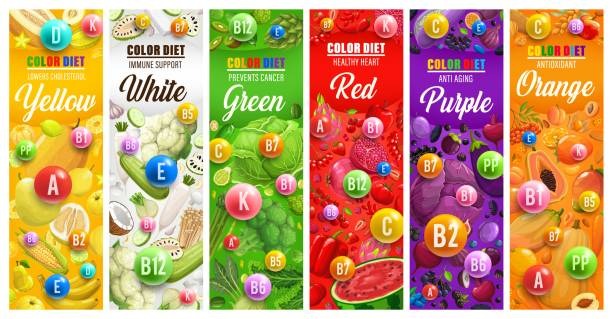In the evolving landscape of food production, visual appeal is no longer just about grabbing attention—it’s about trust. With the growing demand for clean-label and naturally derived ingredients, natural food color manufacturers are stepping into the spotlight, helping food brands replace artificial dyes with plant-based alternatives. One ingredient gaining rapid popularity is anthocyanin food color, a pigment sourced from nature’s most colorful fruits and vegetables.
This blog explores how anthocyanin-based colors are changing the food industry and why manufacturers are investing in their production more than ever before.
What Is Anthocyanin Food Color?
Anthocyanins are water-soluble pigments found in the skins and tissues of deeply colored fruits and vegetables—think blueberries, purple corn, red cabbage, and blackcurrants. These pigments are responsible for the striking red, purple, and blue hues in various plants.
What makes anthocyanin food color unique is not just its vivid color, but its ability to shift tones based on the pH level of the food product. This means it can provide a wide color spectrum—ranging from red in acidic environments to blue or green in alkaline ones.
This color dynamism, coupled with a natural origin, makes anthocyanins an ideal choice for modern food formulations.
Why Natural Food Color Is Replacing Synthetics
Consumers are more conscious than ever about what they’re eating. Artificial colors like Red 40 or Blue 1, while still legal in many countries, are increasingly avoided by consumers due to concerns over allergens, hyperactivity in children, and lack of nutritional value.
Natural food color manufacturers are rising to meet this demand by offering alternatives that:
- Come from recognizable sources (e.g., fruits and vegetables)
- Are perceived as safer and healthier
- Align with organic, vegan, and non-GMO product lines
- Support clean-label declarations on packaging
Anthocyanins fit perfectly within this framework, offering a botanical solution that is not only functional but also marketable.
How Natural Food Color Manufacturers Produce Anthocyanin Colors
Creating a consistent and food-safe colorant from plant material is more complex than it may seem. Manufacturers must ensure that the final product performs well in real-world applications—meaning it needs to be stable under various conditions like heat, light, and storage time.
Here’s how they typically work with anthocyanins:
- Sourcing: Selecting crops with high anthocyanin content for efficient extraction.
- Extraction: Using solvent-based or aqueous processes to isolate the pigment.
- Filtration and concentration: Refining the extract for purity and color intensity.
- Stabilization: Adding natural carriers or antioxidants to enhance shelf life.
- Testing and formulation: Ensuring the color behaves well in the intended product type—whether it’s a yogurt, drink, or snack.
Thanks to years of R&D, today’s anthocyanin food colors are more stable and versatile than ever.
Applications of Anthocyanin Food Color
Anthocyanin-based colorants are being used in a growing range of categories, including:
- Beverages – From energy drinks to flavored waters, offering bold red and purple tones.
- Plant-based dairy – Ideal for vegan yogurts, smoothie bowls, and ice creams.
- Bakery and confectionery – Enhancing icings, glazes, and gummies with natural brilliance.
- Functional foods – Blending nutrition and color in nutraceuticals and superfood powders.
Because anthocyanins are derived from recognizable ingredients, brands can use consumer-friendly label phrases like “colored with fruit juice” or “from vegetable extract,” which further boosts their appeal.
Challenges and Breakthroughs in Anthocyanin Color Use
Despite its many benefits, anthocyanin food color comes with technical challenges. Its sensitivity to pH and instability in high-heat processes can make it difficult to work with in some applications.
To address these issues, natural food color manufacturers are innovating through:
- Microencapsulation to protect pigments during processing.
- Blended natural solutions to extend color ranges and improve stability.
- Fermentation techniques to create consistent pigment yields year-round.
These advances are helping anthocyanins gain ground even in traditionally difficult product categories like baked goods and carbonated drinks.
The Clean-Label Advantage
Food and beverage brands today are not just looking for color—they’re looking for a story. A product colored with elderberry or purple carrot doesn’t just look good—it sounds healthy and wholesome.
This is why natural food color manufacturers are not only pigment suppliers but strategic partners. They help companies reformulate legacy products, innovate new ones, and maintain regulatory compliance across markets. Their expertise allows food brands to confidently claim natural, plant-based colors on their labels—meeting both compliance needs and consumer expectations.
Final Thoughts
As synthetic additives continue to fall out of favor, the demand for natural, plant-based solutions is only accelerating. With anthocyanin food color leading the way, manufacturers of natural food colors are not just following a trend—they’re helping define the future of food design.
Vivid, versatile, and clean-label friendly, anthocyanins offer more than just color—they represent a shift toward transparency, sustainability, and health-driven innovation. And behind every brightly colored natural product is a skilled manufacturer working to bring nature’s palette to the plate.



